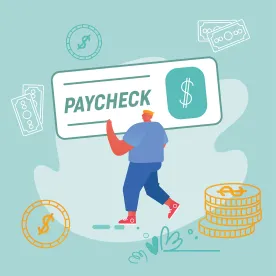Please note that this alert updates and supersedes all prior publications made by our firm pertaining to the subject matter discussed below.
On June 5, 2020, President Trump signed the Paycheck Protection Program Flexibility Act of 2020 (Flexibility Act) into law.
The Flexibility Act makes a number of changes to the Paycheck Protection Program (PPP) that will impact borrowers, including the following (each of which is qualified in its entirety by the full text of the Flexibility Act):
-
The period during which a borrower may now spend the proceeds of a PPP loan on allowable expenses has been extended until December 31, 2020.
-
The period during which the proceeds used to pay eligible expenses may be forgiven will now end on the earlier of (a) twenty-four weeks following the loan’s origination and (b) December 31, 2020. A borrower that received a PPP loan before the enactment of the Flexibility Act may elect to keep the eight-week covered period.
-
To receive loan forgiveness, a borrower must use at least 60% of the loan proceeds for payroll costs and may use up to 40% for payment of other eligible expenses, namely covered rent obligations, covered utility payments and interest on covered mortgage obligations.
-
A borrower’s forgiveness amount will not be reduced, subject to the other provisions of the CARES Act, on account of a reduced full-time equivalent employee (FTE) count or a reduction in employee salary if the borrower:
-
Can document in good faith that it attempted, but was unable, to rehire individuals who were employees of the borrower on February 15, 2020 and has also been unable to hire similarly qualified employees for unfilled positions on or before December 31, 2020; or
-
Can document in good faith an inability to return to the same level of business activity that existed prior to February 15, 2020 due to compliance with requirements established or guidance issued by the Secretary of Health and Human Services, the Director of the Centers for Disease Control and Prevention, or the Occupational Safety and Health Administration during the period beginning on March 1, 2020 and ending December 31, 2020, related to the maintenance of standards for sanitation, social distancing, or any other worker or customer safety requirements.
-
-
Borrowers who reduced their FTE count and/or salary levels will not be subject to a loan forgiveness reduction if they restore their FTE count and salary levels, as applicable, to the levels required by the CARES Act by December 31, 2020.
-
Borrowers will now have ten months from the end of the covered period to apply for loan forgiveness.
-
Loan repayment (including payment of principal, interest and fees) will now be deferred until (a) the amount of loan forgiveness has been remitted to the lender by the SBA or (b) ten months after the end of the covered period in the event that the borrower does not apply for loan forgiveness.
-
A borrower that obtains a loan on or after June 5, 2020 will be required to repay the loan over a minimum of five years. Lenders may extend the maturity date of loans entered into prior to June 5, 2020.
-
The payroll tax deferral provision contained in the CARES Act, which was not available to borrowers once they had received notice that their loan was forgiven, is now available to all borrowers.
In addition, the Senate added a letter to the Congressional Record clarifying its intention that the extension of the covered period does not authorize the SBA to issue any new PPP loans after the June 30, 2020 deadline established by the CARES Act.







 />i
/>i
